Price:₹7,000.00
Tungnath Trek is one of the most revered treks in the Indian state of Uttarakhand, known for its spiritual significance and breathtaking natural beauty.
Tungnath Temple is one of the most significant temples dedicated to Lord Shiva, situated in the Rudraprayag district of the Indian state of Uttarakhand. It holds the distinction of being the highest Shiva temple in the world, nestled in the scenic Garhwal Himalayan range at an altitude of approximately 3,680 meters (12,073 feet) above sea level.
The temple is a part of the Panch Kedar pilgrimage, which comprises five temples dedicated to Lord Shiva in the Garhwal region of Uttarakhand. Legend has it that Tungnath is the place where the arm of Lord Shiva appeared after he took the form of a bull. This sacred site attracts devotees and trekkers alike, offering not only spiritual solace but also breathtaking views of the surrounding Himalayan peaks.
Overview of Tungnath Trek
Location:
- State: Uttarakhand, India.
- District: Rudraprayag.
- Base Camp: Chopta.
- Trek Duration : 02 Nights 03 Days from Rishikesh to Rishikesh
Overview:
- Altitude: Tungnath Temple is situated at an altitude of 3,680 meters (12,073 feet) above sea level, making it one of the highest Shiva temples in the world.
- Duration: The trek typically takes around 03 days to complete, depending on the pace of the trekker.
- Difficulty: Moderate. It’s suitable for beginners as well as experienced trekkers.
- Best Time to Visit: The ideal time to undertake this trek is from all years spacily yatra season may to November
- Winter Trek- December to March . During winter, heavy snowfall makes the region inaccessible.
Trek Route:
- Chopta to Tungnath: The trek starts from Chopta, which is easily accessible by road from various parts of Uttarakhand. From Chopta, it’s about a 3.5-kilometer trek to Tungnath Temple. The route passes through dense forests and offers breathtaking views of the Himalayas.
- Tungnath to Chandrashila: Once you reach Tungnath, you can further trek for about 1.5 kilometers to reach Chandrashila Peak. It’s a steep ascent, but the panoramic views of the Himalayas from the summit are absolutely worth it. You can see peaks like Nanda Devi, Trishul, Kedar Peak, Chaukhamba, and Bandarpunch from here.
- Return Journey: After visiting Tungnath and Chandrashila, trekkers usually return to Chopta to conclude the trek. Alternatively, some trekkers may choose to continue their journey towards Deoria Tal or other nearby attractions.
Highlights:
- Tungnath Temple: The highest Shiva temple in the world, surrounded by breathtaking views of the Himalayas.
- Chandrashila Peak: Offers panoramic views of the snow-capped Himalayan peaks including Nanda Devi, Trishul, Kedar Peak, and Chaukhamba.
- Scenic Beauty: The trek passes through lush green meadows, dense forests of rhododendron and oak, and offers stunning views of the Garhwal Himalayas.
- Spiritual Significance: Apart from its natural beauty, the trek is significant for Hindus as it’s believed to be the place where Lord Shiva meditated.
Tips:
- Fitness Preparation: While the trek is moderate, it’s advisable to do some physical preparation prior to undertaking it, especially if you’re not accustomed to trekking at high altitudes.
- Weather Conditions: Weather in the Himalayas can be unpredictable, so it’s important to check the weather forecast before starting the trek and pack accordingly.
- Permits: Some treks in Uttarakhand require permits, so it’s advisable to check if any permits are needed beforehand.
- Guides: While the trail is well-marked, hiring a local guide can enhance your trekking experience and ensure safety, especially if you’re unfamiliar with the terrain.
Tungnath Mahadev trek offers not only a physical challenge but also a spiritual and soul-stirring experience amidst the majestic Himalayas.
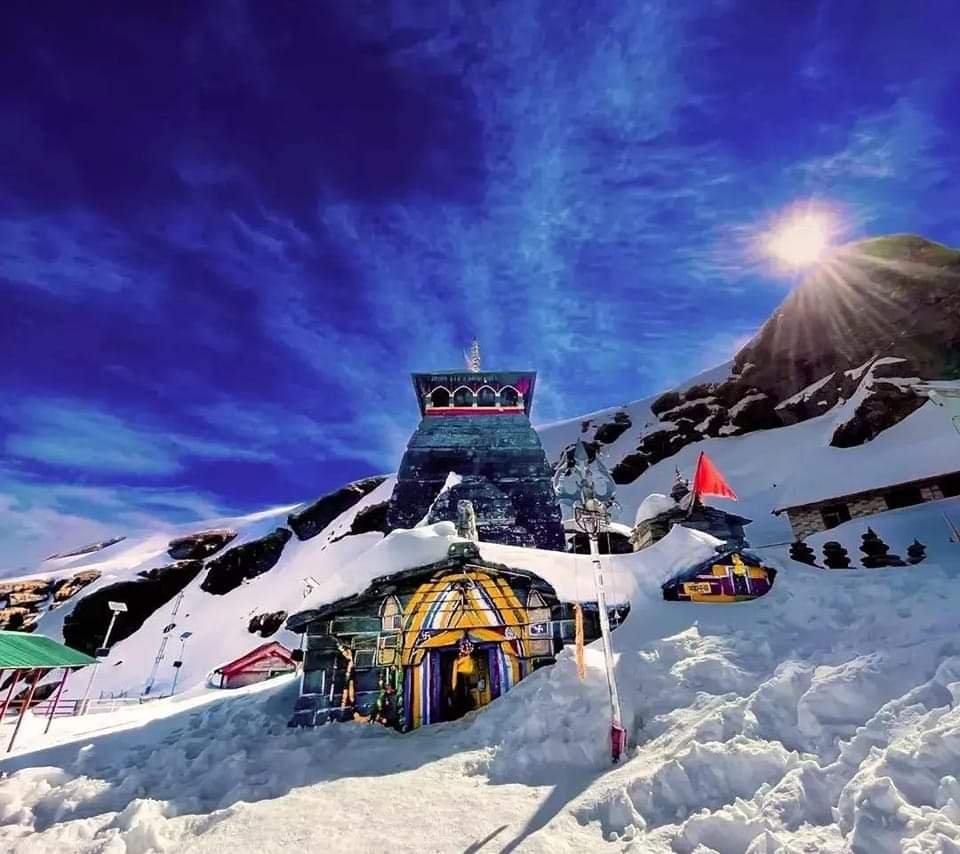
History of Tungnath Trek
The history of Tungnath Temple is steeped in mythology and legend, dating back thousands of years.
Here’s an overview:
Mythological Significance:
- According to Hindu mythology, Tungnath Temple is one of the Panch Kedar, the five temples dedicated to Lord Shiva in the Garhwal region of Uttarakhand.
- The legend goes that after the battle of Kurukshetra in the Mahabharata, the Pandavas wanted to seek forgiveness from Lord Shiva for their sins committed during the war.
- Lord Shiva, however, evaded them and took the form of a bull. The Pandavas chased the bull, and when they finally caught up with it, the bull disappeared into the ground. It is believed that the hump of the bull reappeared at five different locations, which became the Panch Kedar temples. Tungnath is where the hump appeared.
Historical Timeline:
- The exact origins of the Tungnath Temple are not precisely documented, but it is believed to be more than 1000 years old.
- The temple has undergone several renovations and reconstructions over the centuries due to damage caused by natural calamities like earthquakes and avalanches.
- Historically, it has been a site of pilgrimage for devotees of Lord Shiva, who visit the temple to seek blessings and offer prayers.
Architecture:
- The architecture of Tungnath Temple is typical of the North Indian style of temple architecture, characterized by its stone construction, pyramid-shaped tower (shikhara), and intricate carvings.
- The temple is relatively small in size compared to some other prominent Hindu temples but holds significant spiritual importance.
Cultural and Spiritual Significance:
- Tungnath Temple is revered by Hindus as one of the holiest shrines dedicated to Lord Shiva.
- It attracts devotees and trekkers from all over India and beyond who undertake the arduous trek to seek the blessings of Lord Shiva and experience the spiritual ambiance of the Himalayas.
- The temple is not just a place of worship but also a symbol of faith, devotion, and the enduring connection between humanity and the divine.
Conservation Efforts:
- The Archaeological Survey of India (ASI) and local authorities are responsible for the conservation and preservation of Tungnath Temple, ensuring that its historical and cultural significance is maintained for future generations.
- Efforts are also made to ensure that the surrounding natural environment is protected and preserved, as the temple is located in a region of ecological importance within the Himalayas.
Tungnath Temple stands as a testament to the rich cultural and religious heritage of India, attracting pilgrims, trekkers, and spiritual seekers alike to its sacred precincts amidst the serene beauty of the Garhwal Himalayas.
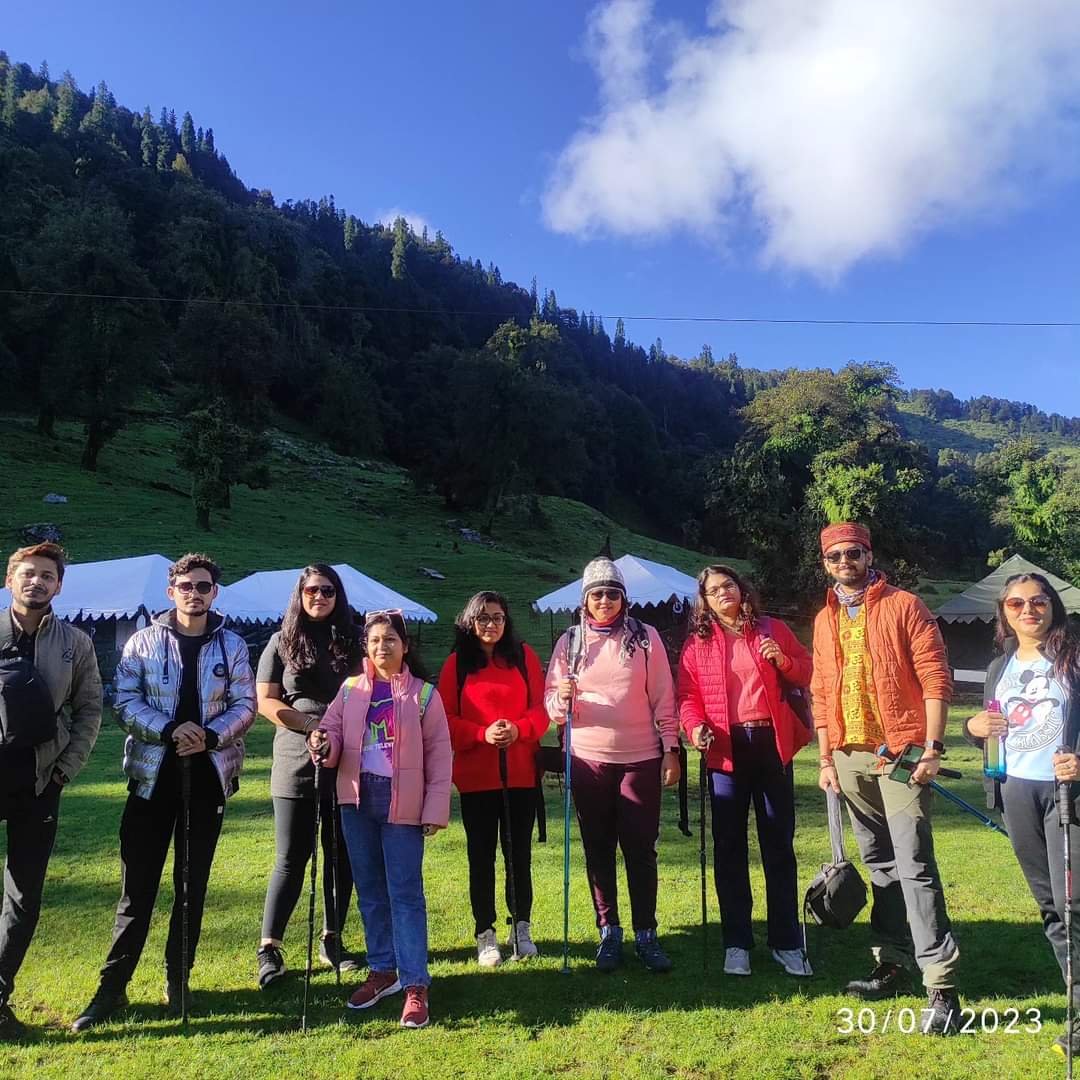
The Tungnath Trek is generally considered to be of moderate level. Here’s why?
Moderate Difficulty:
- Distance: The trek from Chopta, the base camp, to Tungnath Temple is approximately 3.5 kilometers (about 2.2 miles) one way. While not excessively long, it does require a reasonable level of physical fitness, especially considering the altitude gain.
- Altitude Gain: Tungnath Temple is situated at an altitude of 3,680 meters (12,073 feet) above sea level. Trekking at such altitudes can be physically demanding, particularly for those who are not accustomed to high-altitude environments. However, the altitude gain is gradual, allowing trekkers to acclimatize along the way.
- Terrain: The trail involves a mix of gradual ascents, flat stretches, and some steeper sections. The path passes through dense forests, rocky terrain, and open meadows, offering a varied trekking experience. While the trail is generally well-defined, there may be some uneven or rocky patches along the way, requiring careful footing.
- Weather Conditions: Weather in the Himalayan region can be unpredictable, with conditions ranging from sunny and clear to cold, windy, or even snowy, depending on the season. Trekkers should be prepared for changes in weather and carry appropriate clothing and gear.
Accessibility:
- The trek is accessible to most people with a reasonable level of fitness and no serious health issues. It is suitable for beginners as well as experienced trekkers.
- However, individuals with respiratory problems or other health concerns should consult a doctor before undertaking the trek, especially due to the altitude.
Tips for Trekking Tungnath Temple:
- Physical Preparation: Engage in regular physical exercise and cardiovascular activities to improve your stamina and endurance before the trek.
- Hydration: Stay hydrated throughout the trek, as the high altitude can increase the risk of dehydration.
- Acclimatization: Take breaks as needed to allow your body to acclimatize to the altitude. Listen to your body and pace yourself accordingly.
- Proper Gear: Wear comfortable trekking shoes with good grip, and dress in layers to adjust to changing weather conditions. Carry essential items like water, snacks, sunscreen, hat, sunglasses, and a first aid kit.
- Respect Nature: Leave no trace and respect the environment by avoiding littering and following designated trails.
Overall, while the trek to Tungnath Temple presents some challenges, it is a rewarding experience that offers stunning views of the Himalayas and a chance to connect with nature and spirituality in one of the most beautiful regions of India.
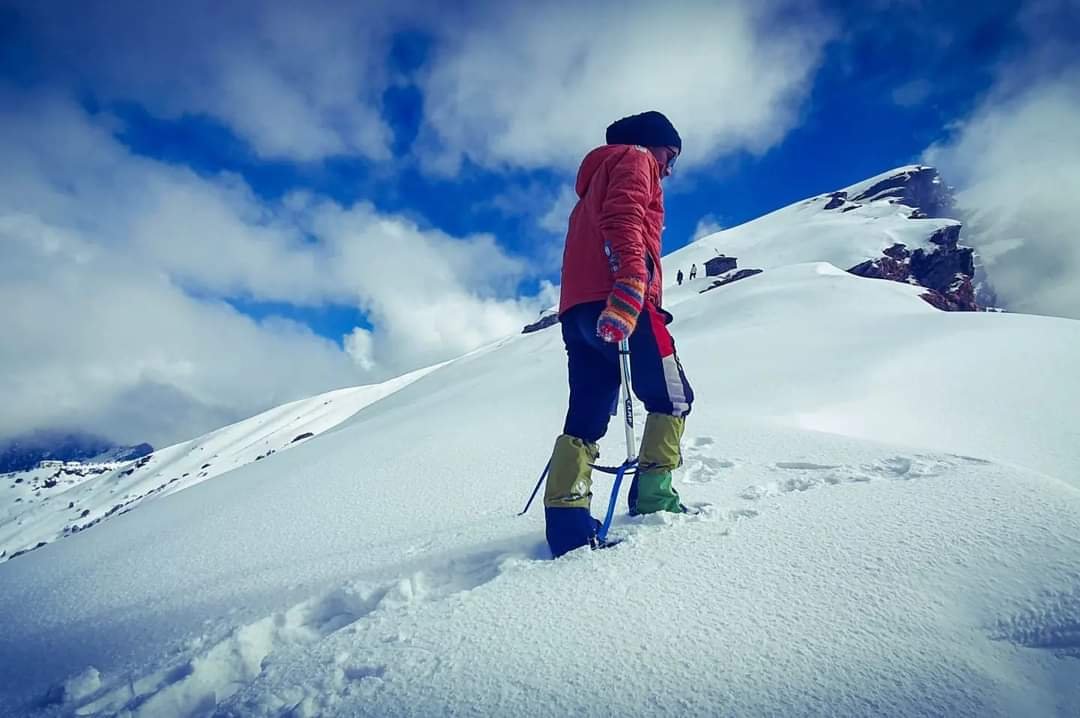
How to Reach Chopta for Tungnath Trek
Reaching Tungnath Temple involves traveling to the base camp at Chopta and then undertaking a trek to the temple.
Here’s how to reach Tungnath Temple:
By Air:
- Nearest Airport: The nearest airport to Chopta is the Jolly Grant Airport in Dehradun, Uttarakhand.
- From Dehradun: From the airport, you can hire a taxi or take a bus to reach Chopta. The distance between Dehradun and Chopta is approximately 225 kilometers, and the journey takes around 7-8 hours by road.
By Train:
- Nearest Railway Station: The nearest major railway station to Chopta is the Rishikesh Railway Station.
- From Rishikesh: From Rishikesh, you can hire a taxi or take a bus to reach Chopta. The distance between Rishikesh and Chopta is approximately 210 kilometers, and the journey takes around 7-8 hours by road.
By Road:
- From Delhi: Chopta is well-connected by road to major cities like Delhi, Dehradun, and Rishikesh. You can either drive to Chopta or take a bus from Delhi to reach there.
- From Haridwar: If you’re traveling from Haridwar, you can hire a taxi or take a bus to reach Chopta. The distance between Haridwar and Chopta is approximately 225 kilometers, and the journey takes around 7-8 hours by road.
Trek to Tungnath Temple:
- Once you reach Chopta, you can start the trek to Tungnath Temple. The trek starts from Chopta and is approximately 3.5 kilometers (about 2.2 miles) one way.
- The trail to Tungnath Temple is well-marked and passes through dense forests, meadows, and rocky terrain. It takes around 2-3 hours to trek from Chopta to Tungnath Temple, depending on your pace and fitness level.
- After visiting Tungnath Temple, you can optionally continue trekking for another 1.5 kilometers to reach Chandrashila Peak, which offers panoramic views of the Himalayas.
Tips:
- It’s advisable to start the trek early in the morning to avoid the heat and crowds, especially during the peak tourist season.
- Carry essential items like water, snacks, sunscreen, hat, sunglasses, and a first aid kit during the trek.
- Check the weather forecast before starting the trek and dress accordingly.
- Respect the environment and follow designated trails to minimize your impact on the fragile ecosystem of the Himalayas.
By following these steps, you can reach Tungnath Temple and embark on a memorable trekking experience amidst the stunning landscapes of the Garhwal Himalayas. – Himalayan Hikers
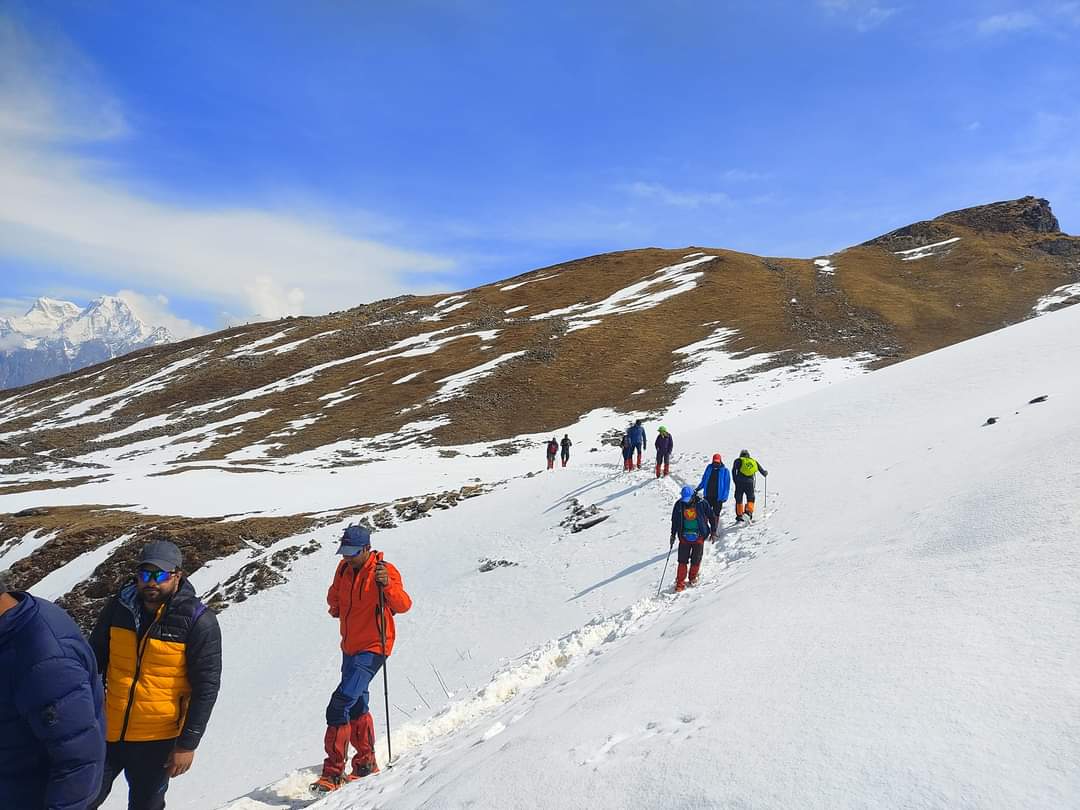
Short Itinerary of Tungnath Trek
Day 1: Drive from Rishikesh to Chopta
- Depart from Rishikesh early in the morning.
- Travel by road to Chopta, a picturesque hill station and the base camp for the Tungnath Temple trek.
- Enjoy the scenic drive through the Garhwal region of Uttarakhand, passing through charming towns and lush green valleys.
- Arrive in Chopta by late afternoon or evening.
- Check into your accommodation and relax.
- Spend the evening exploring the local surroundings and enjoying the serene ambiance of Chopta.
Day 2: Chopta to Tungnath Temple and Chandrashila Peak
- Wake up early and have breakfast.
- Start the trek to Tungnath Temple, which is approximately 3.5 kilometers from Chopta.
- Trek through dense forests, meadows, and rocky terrain, enjoying the beautiful views of the Himalayas along the way.
- Reach Tungnath Temple and explore the ancient temple complex dedicated to Lord Shiva. Take some time to offer prayers and soak in the spiritual atmosphere.
- Optionally, continue trekking for another 1.5 kilometers to reach Chandrashila Peak, which offers breathtaking panoramic views of the surrounding mountains.
- Spend some time at Chandrashila Peak, taking in the majestic vistas and capturing memorable photographs.
- Descend back to Chopta in the afternoon.
- Relax and unwind in Chopta, enjoying the tranquility of the mountain surroundings.
Day 3: Return to Rishikesh
- After breakfast, bid farewell to Chopta and start your journey back to Rishikesh.
- Enjoy the scenic drive once again as you make your way through the mountains and valleys.
- Stop at scenic viewpoints or local eateries along the way to break the journey and take in the sights.
- Arrive back in Rishikesh by late afternoon or evening.
- Check into your accommodation in Rishikesh and relax after the trek.
- Spend the evening exploring the vibrant streets of Rishikesh, visiting temples, cafes, or attending an evening aarti ceremony by the Ganges.
- Reflect on your memorable trekking experience to Tungnath Temple and Chandrashila Peak.
Chopta – The Base Camp of Tungnath Trek
The Base Camp of Chopta serves as the base camp for several treks in the Garhwal region of Uttarakhand, including the popular trek to Tungnath Temple and Chandrashila Peak.
Here’s more about Chopta:
Location:
- State: Uttarakhand, India.
- District: Rudraprayag.
- Altitude: Chopta is situated at an altitude of approximately 2,680 meters (8,790 feet) above sea level.
Characteristics:
- Scenic Beauty: Chopta is renowned for its pristine natural beauty, with lush green meadows, dense forests, and stunning views of the surrounding Himalayan peaks.
- Biodiversity: The region around Chopta is home to a diverse range of flora and fauna, including pine, oak, and rhododendron forests, as well as various species of birds and wildlife.
- Serene Ambiance: Known for its tranquil and peaceful ambiance, Chopta offers a serene escape from the hustle and bustle of city life, making it an ideal destination for nature lovers and spiritual seekers.
Base Camp Facilities:
- Accommodation: Chopta offers a range of accommodation options to suit different preferences and budgets, including guesthouses, campsites, and budget hotels.
- Dining: There are several eateries and restaurants in Chopta serving delicious local cuisine as well as popular Indian dishes. You can also find tea stalls and small shops selling snacks and refreshments.
- Basic Amenities: While Chopta is a relatively remote area, it provides basic amenities such as shops selling essential items, medical facilities, and mobile network coverage (though it may be limited in some areas).
Trekking Hub:
- Chopta serves as a popular starting point for various treks in the region, including the trek to Tungnath Temple, Chandrashila Peak, Deoria Tal, and more.
- Trekkers often use Chopta as a base camp to acclimatize before embarking on longer treks in the Garhwal Himalayas.
Accessibility:
- By Road: Chopta is well-connected by road to major cities and towns in Uttarakhand, including Rishikesh, Dehradun, and Haridwar. Regular buses and taxis ply between these places and Chopta.
- Nearest Railway Station: The nearest railway station to Chopta is the Rishikesh Railway Station, located approximately 210 kilometers away.
- Nearest Airport: The nearest airport to Chopta is the Jolly Grant Airport in Dehradun, located approximately 225 kilometers away.
Attractions Nearby:
- Apart from trekking, Chopta offers opportunities for birdwatching, photography, and nature walks.
- Nearby attractions include Deoria Tal, a beautiful lake surrounded by lush forests, and Ukhimath, a small town with ancient temples and cultural significance.
Chopta, with its natural beauty, serene ambiance, and strategic location as a trekking hub, attracts travelers and trekkers seeking an immersive experience in the lap of the Himalayas.
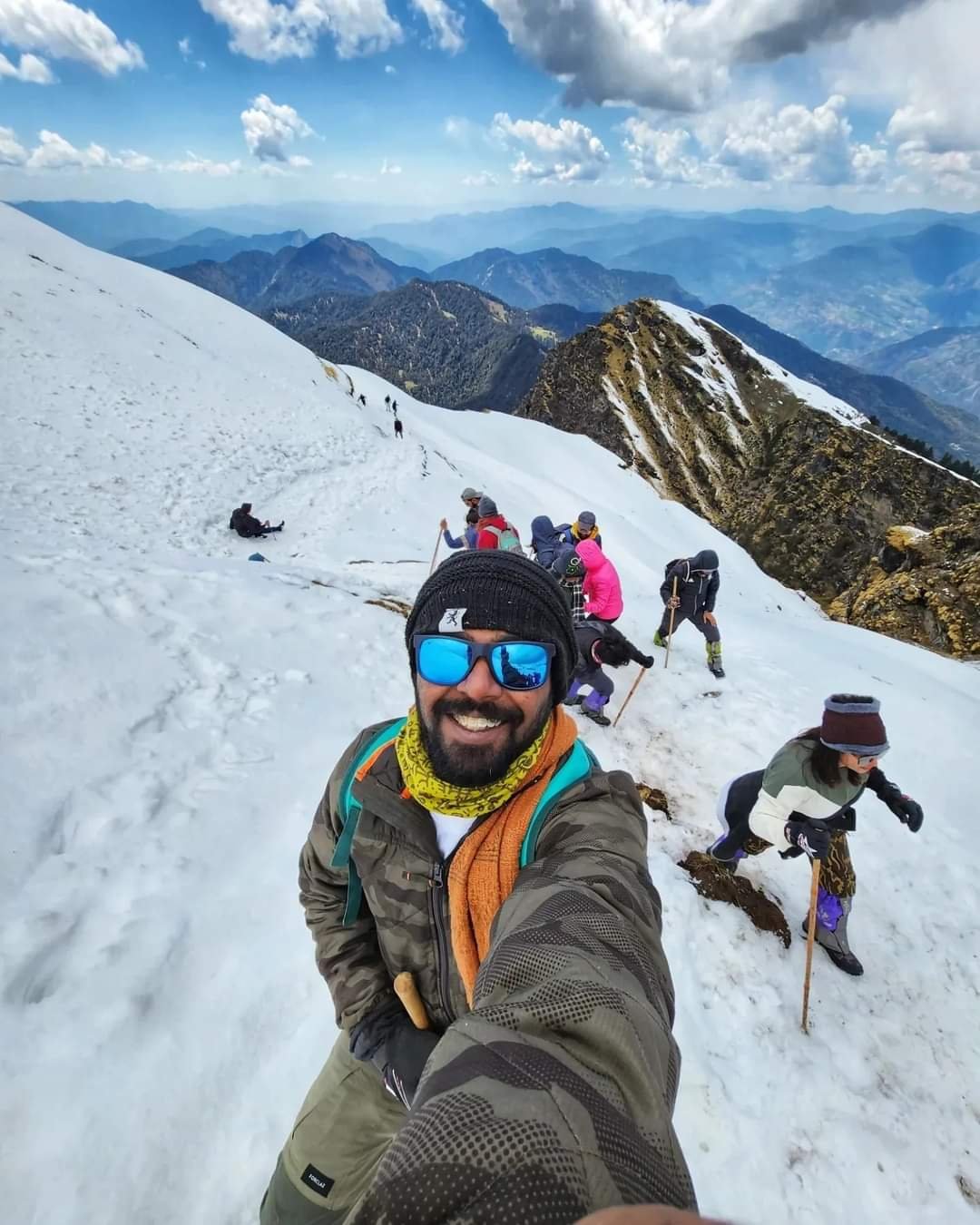
Age limit for Tungnath Trek ?
There isn’t a specific age limit for the Tungnath Temple trek, as it largely depends on an individual’s physical fitness, health condition, and level of experience with trekking at higher altitudes. However, it’s essential to consider certain factors before embarking on the trek, especially for older adults
Considerations for minimum 08 year to 65 years:
- Physical Fitness: The trek involves walking uphill for several kilometers, which can be physically demanding, especially at higher altitudes. Older adults should assess their physical fitness level and consult a healthcare professional if they have any health concerns.
- Altitude Acclimatization: Tungnath Temple is situated at an altitude of 3,680 meters (12,073 feet) above sea level. Older adults may experience symptoms of altitude sickness, such as headache, nausea, and fatigue. It’s important to acclimatize properly by taking breaks, staying hydrated, and ascending gradually.
- Terrain and Trail Difficulty: While the Tungnath Temple trek is considered moderate in difficulty, it involves walking on uneven terrain, rocky paths, and steep ascents. Older adults should be prepared for the physical exertion required and take precautions to avoid slips or falls.
- Weather Conditions: Weather in the Himalayan region can be unpredictable, with temperatures varying widely throughout the day. Older adults should dress appropriately for the weather, carry sufficient water, sunscreen, and protective clothing.
- Health Considerations: Individuals with pre-existing health conditions such as heart problems, respiratory issues, or joint problems should consult a healthcare professional before undertaking the trek. It’s essential to be aware of one’s limitations and not push beyond what is comfortable and safe.
Recommendations:
- While there isn’t a strict age limit, older adults should assess their fitness level and consider their ability to undertake the trek comfortably.
- It’s advisable to trek at a moderate pace, take frequent breaks, and listen to your body’s signals.
- Consider hiring a local guide or trekking with a group for added support and safety.
- Start the trek early in the day to avoid walking during the hottest part of the day and to allow ample time to complete the trek.
- If in doubt, consult with a trekking expert or tour operator who can provide guidance tailored to individual needs and capabilities.
Ultimately, older adults can enjoy the Tungnath Temple trek with proper preparation, precautions, and awareness of their physical limitations. It’s essential to prioritize safety and well-being while experiencing the beauty and spirituality of the Himalayas.
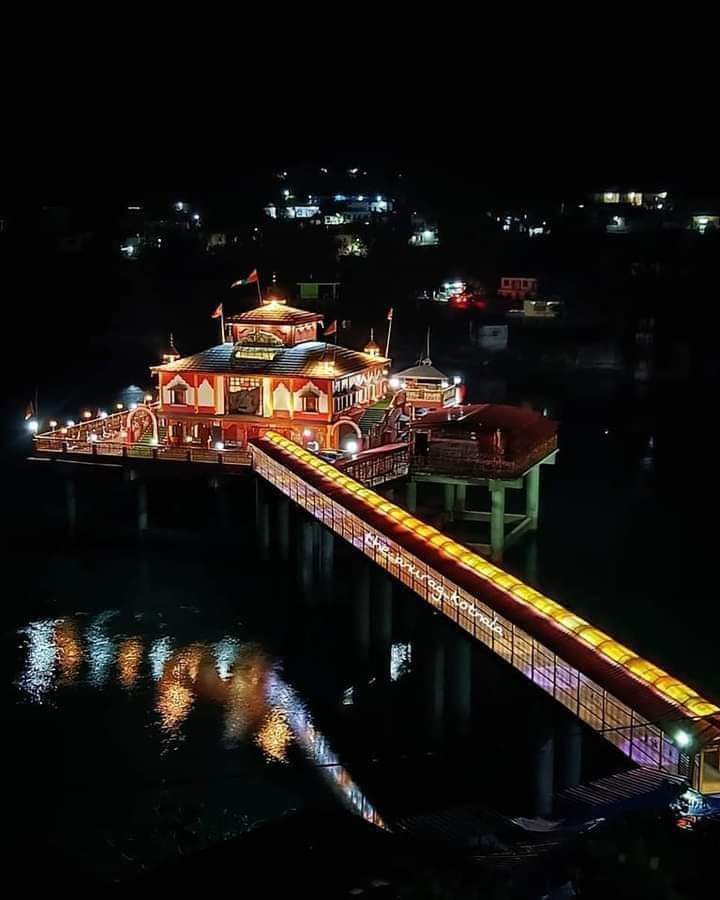
How to Prepare for Tungnath Trek?
When preparing for the Chopta to Tungnath Temple trek, it’s crucial to pack the right gear and essentials to ensure a safe and enjoyable experience.
Here’s a list of things to carry for the trek:
Clothing:
- Layered Clothing: Carry lightweight, moisture-wicking clothing that can be layered for warmth as temperatures can vary throughout the day. Include a base layer, insulating layer (fleece or down jacket), and waterproof outer shell.
- Trekking Pants: Comfortable, quick-drying pants that allow for easy movement.
- T-shirts: Lightweight, breathable shirts for trekking.
- Woolen Cap and Gloves: For warmth, especially during early mornings and evenings.
- Socks: Moisture-wicking, cushioned socks to prevent blisters.
- Trekking Shoes: Sturdy, waterproof hiking boots with good grip for traction on uneven terrain.
Gear and Accessories:
- Backpack: A comfortable, well-fitted backpack to carry your essentials during the trek.
- Trekking Poles: Optional but helpful for stability and reducing strain on knees during descents.
- Headlamp/Flashlight: For early morning or evening trekking and in case of low visibility.
- Sunglasses: To protect your eyes from UV rays and glare off snow (if trekking in winter).
- Sun Hat/Cap: To shield your face from the sun.
- Personal Identification: Carry identification documents and emergency contact information.
- Map/Navigation: A map of the trekking route or a GPS device for navigation (if trekking independently).
- Whistle: For signaling in case of emergencies.
- Trash Bags: Pack out any trash to keep the trails clean and preserve the environment.
Safety and Health:
- First Aid Kit: Include basic medications, bandages, antiseptic wipes, blister pads, and any personal medications.
- Water Bottle/Hydration System: Carry sufficient water to stay hydrated during the trek.
- High-energy Snacks: Pack lightweight, nutritious snacks like nuts, energy bars, dried fruits, and chocolates for quick energy boosts.
- Sunscreen: Apply sunscreen with a high SPF to protect your skin from sunburn.
- Lip Balm: With SPF protection to prevent chapped lips.
- Insect Repellent: To ward off mosquitoes and other insects.
- Personal Toiletries: Including hand sanitizer, wet wipes, and toilet paper (carry out used toilet paper).
- Emergency Shelter: Carry a lightweight emergency shelter (such as a space blanket or bivvy sack) for unexpected situations.
Optional Items:
- Camera: For capturing the stunning landscapes and memories of the trek.
- Trekking Guidebook/Trail Map: For reference and additional information about the trek.
- Trekking Permit/ID: If required for the trek, ensure you have the necessary permits and identification.
- Portable Power Bank: To recharge electronic devices (if required).
Tips:
- Pack light but ensure you have all the essentials for comfort and safety.
- Check the weather forecast before the trek and pack accordingly.
- Distribute weight evenly in your backpack to maintain balance and reduce strain on your back.
- Keep valuables secure and protected from moisture.
- Carry a small, waterproof bag for electronics and valuables to protect them from rain or snow.
- Double-check your gear and supplies before starting the trek to ensure nothing essential is forgotten.
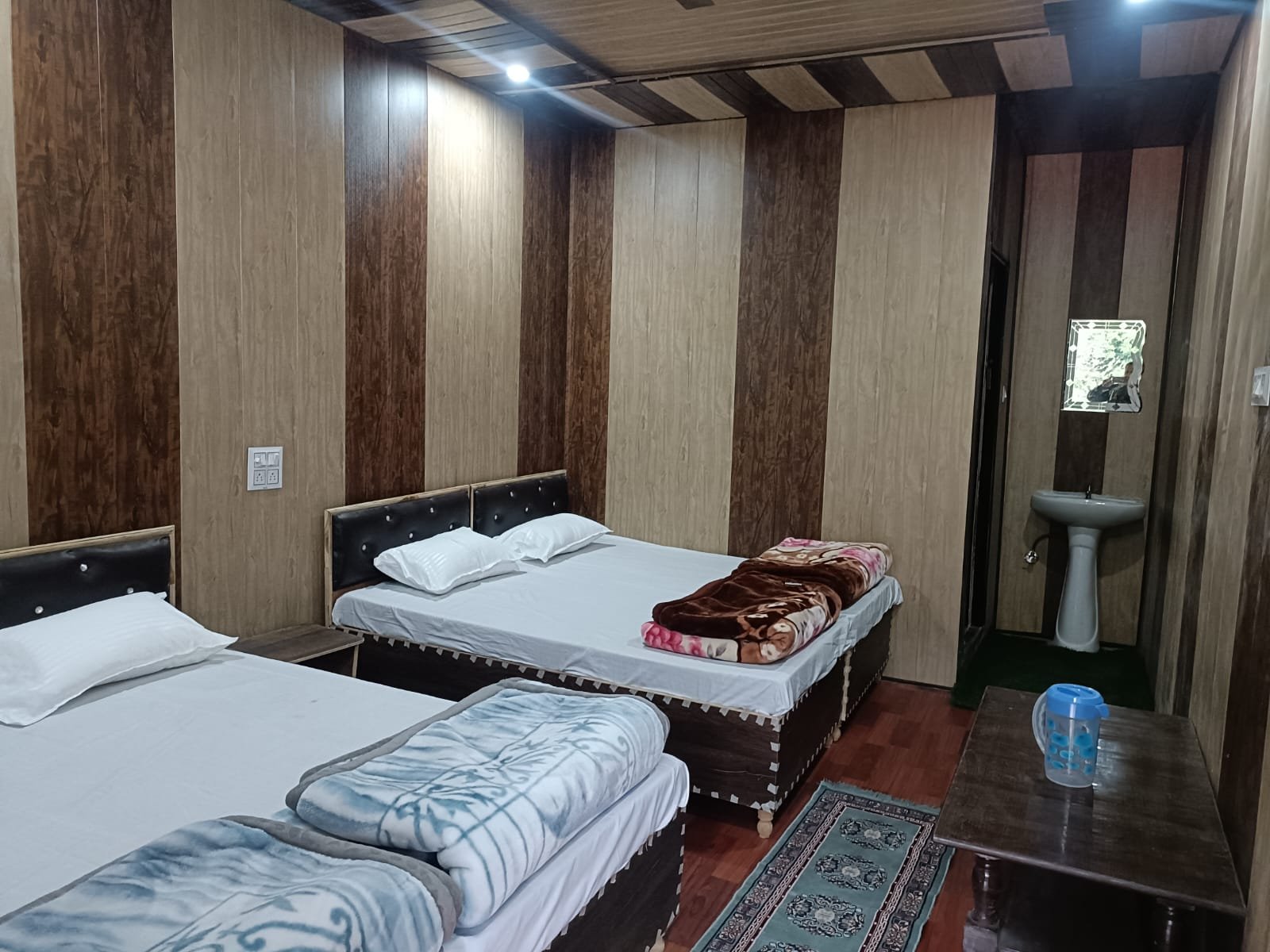
Bring Your Basic Medical Kit on Tungnath Trek
Bringing a basic medical kit on your Tungnath trek is essential for handling minor injuries, ailments, and emergencies.
Here’s a list of items to include in your medical kit:
Basic First Aid Supplies:
- Adhesive Bandages (Band-Aids): Various sizes for covering cuts, blisters, and minor wounds.
- Sterile Gauze Pads and Tape: For larger wounds or as additional padding.
- Antiseptic Wipes: To clean wounds and prevent infection.
- Antibacterial Ointment: For applying to cuts and scrapes to prevent infection.
- Blister Pads or Moleskin: To protect and cushion blistered areas on the feet.
- Tweezers: For removing splinters, ticks, or other foreign objects from the skin.
- Scissors: For cutting tape, gauze, or clothing if needed.
- Safety Pins: For securing bandages or clothing.
Medications:
- Pain Relievers: Such as acetaminophen (Tylenol) or ibuprofen (Advil) for headaches, muscle aches, or minor injuries.
- Antihistamines: For allergic reactions, insect bites, or hay fever.
- Anti-diarrheal Medication: To treat diarrhea or upset stomach.
- Antacids: For indigestion or heartburn.
- Anti-inflammatory Cream or Gel: For muscle strains, sprains, or minor joint pain.
- Prescription Medications: If you take any regular medications, be sure to bring an ample supply.
Other Essentials:
- Personal Medications: Any prescription medications you take regularly.
- Hand Sanitizer: For cleaning hands when soap and water are not available.
- Sunscreen: With a high SPF to protect exposed skin from sunburn.
- Lip Balm with SPF: To prevent chapped lips and sunburn.
- Insect Repellent: To ward off mosquitoes and other insects.
- Oral Rehydration Salts: To replenish electrolytes in case of dehydration.
- Emergency Contact Information: Include contact details for emergency contacts, healthcare providers, and insurance information.
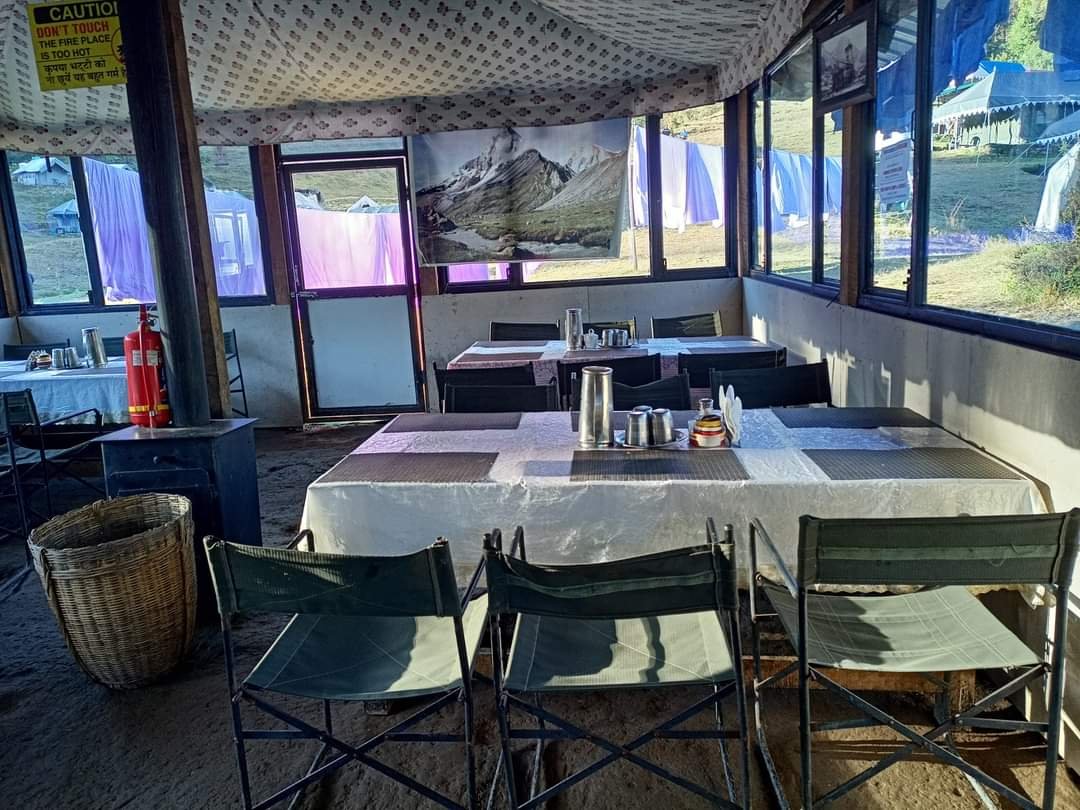
Additional Considerations:
- Medical Conditions: If you have any specific medical conditions, allergies, or special health needs, be sure to pack accordingly and inform your trekking companions.
- Expiry Dates: Check the expiry dates of all medications and supplies in your medical kit before the trek and replace any expired items.
- Training: Ensure that you and your trekking companions are familiar with how to use the items in the medical kit and basic first aid procedures.
- Emergency Plan: Have a plan in place for how to respond to medical emergencies or injuries while on the trek, including evacuation procedures if necessary.
By packing a well-stocked medical kit and being prepared to handle common injuries and ailments, you can enjoy your Tungnath trek with greater peace of mind and readiness for any medical situations that may arise.

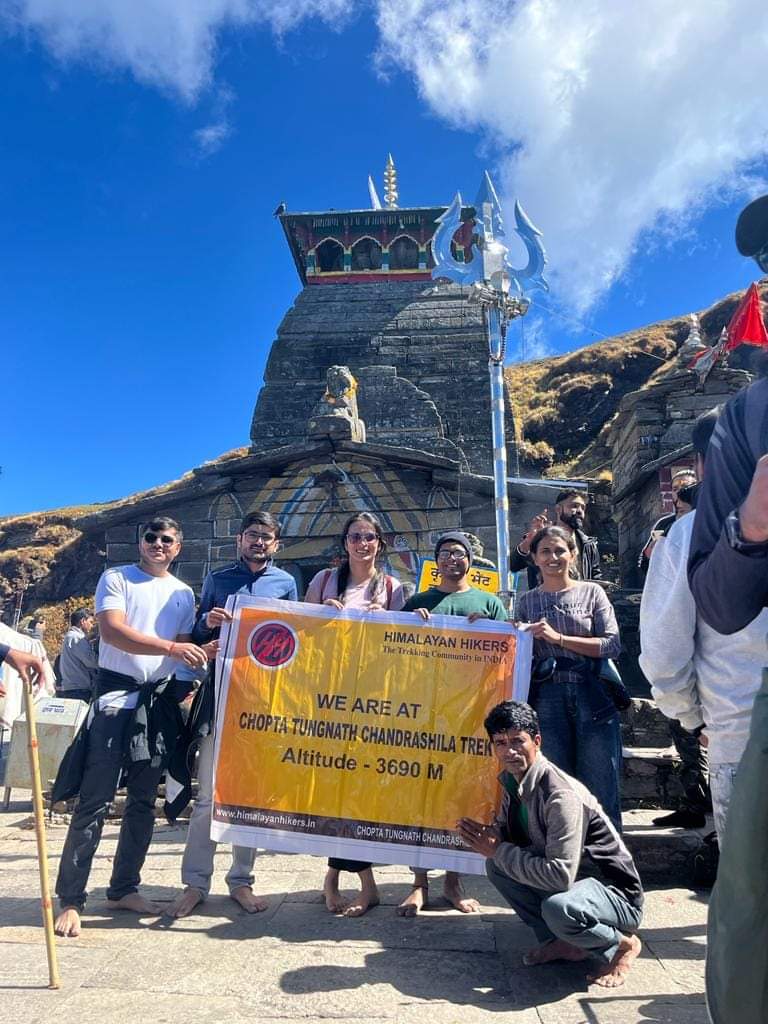
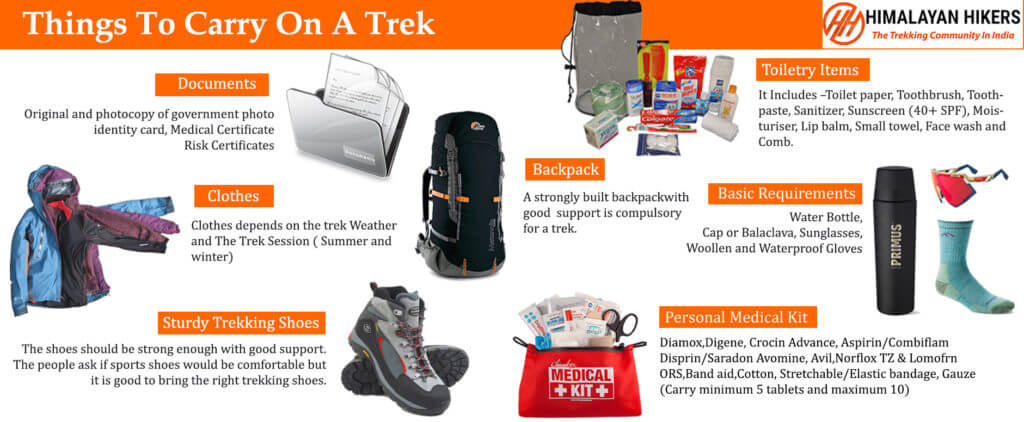

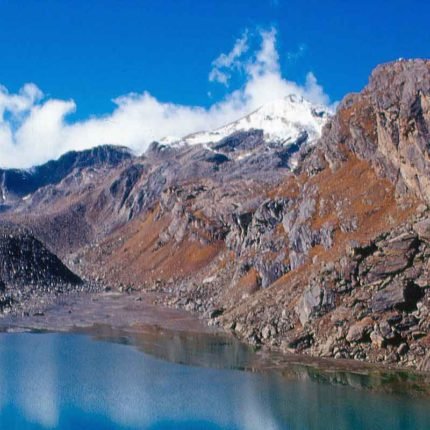
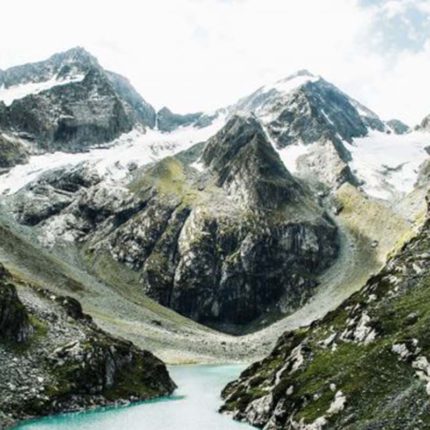
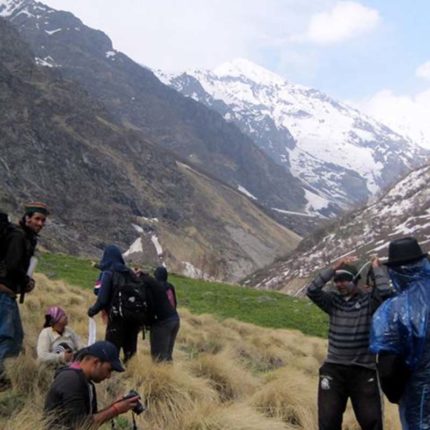
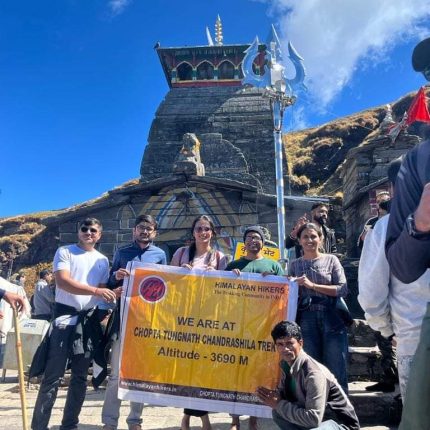
Reviews
There are no reviews yet.